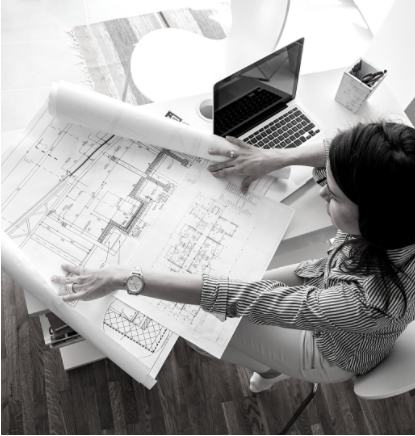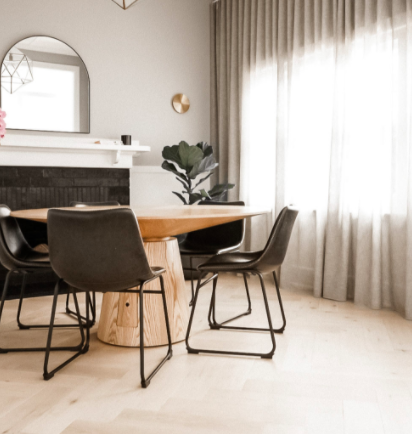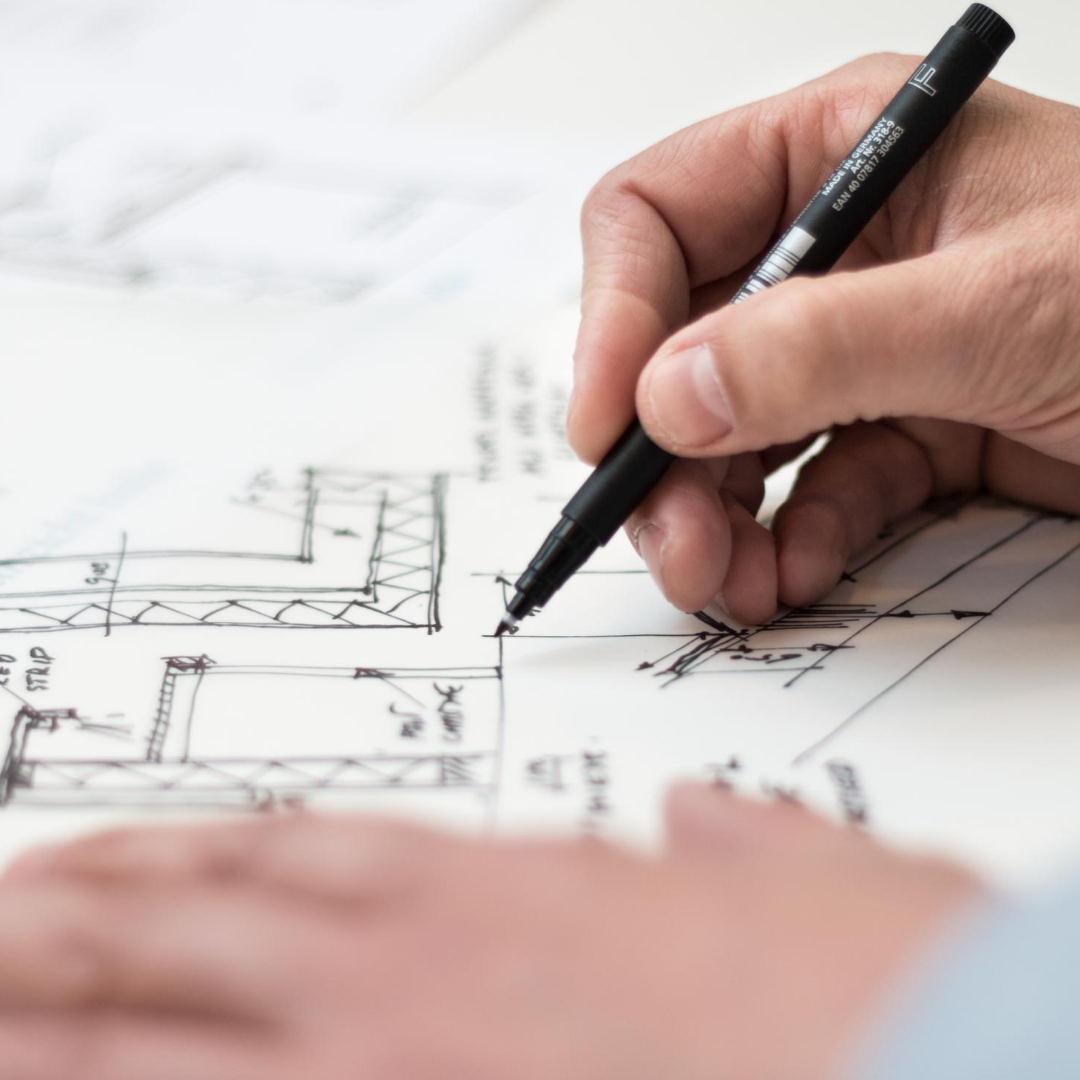I believe that writing a design brief should be one of the first things you do before you hire anyone to help you with designing your new home. Regardless of whether you’re looking to hire an architect, a building designer, an interior designer or a kitchen designer, you’re going to need a design brief with a set of guidelines that will steer the project in the direction that you would like it to go.
But, in my experience, it’s actually quite rare to see a new client that has taken the time to think about what they want, what problems they are looking for solutions to and what exactly they’d like the design to achieve. By the time a homeowner gets to the point where they’re speaking with a designer, they’ve usually come to the conclusion that they aren’t capable of designing it themselves and a professional designer is going to be able to come up with something far more superior than what they could by themselves. And because of this, they often don’t come armed with specific objectives for the design and criteria for how they will assess the quality of the design that is produced for them – because, surely a professional designer will know better. Right?
I couldn’t disagree more.
Great design is a set of solutions that are a direct response to a specific problem or set of objectives – and these need to come from the client. Ultimately, it will be the people who will be using the space who will decide whether the design was successful, so they should be the ones who frame that success criteria.
But, before I go on any further, let me just backtrack a little…
What is a design brief ?
Essentially this is just a tool that’s used to communicate and help your designer to understand what you want help with and what you’d like to achieve from the process.
These things are often discussed as part of an initial design meeting, but the problem with just chatting about what you want is that it’s not tangible enough and you’re often relying on the designer to present you with the right questions before you voice your opinion about certain things. Conversation can be very fluid and we don’t always cover off on the most important things, especially if there is more than one opinion in the room that needs to be heard.
Writing down your brief just makes it clearer to everyone what you will be working towards. You can never have too much clear communication between a client and designer.
In my experience, when we see designs being bounced back and forth with revisions from the client, this usually means the client is very clear about what they want, they just didn’t have the tools to communicate it clearly from the outset.
What should be included in a design brief?
The short answer is “include anything that will help your designer understand what it will take to make you happy”.
But in most cases, I think it should include :
Scope
What specifically do you want them to deliver and how?
This is an area that I’ve seen some confusion around because clients going through this for the first time often don’t know what to expect. Make sure you understand this upfront so that you know what you’re paying for.
For example, if someone is helping you to design your new floorplan, will you be provided with a 2D drawing of the proposed layout, or are you also wanting a 3D model, elevations, rendered illustrations? Get specific and read the proposal thoroughly.
Your objectives
What are the underlying reasons why you’re designing a new home or space?
What problems are you seeking solutions for?
What would you like to achieve at the end of the process?
Style Direction
This is an important one because style is so subjective.
Most people do know what they like (or at the very least, they know what they don’t like) but they often don’t have the confidence to express these preferences to a designer, because they think a designer will know better. Wrong.
If the designer presents you with ideas that aren’t aligned with your personal style and preferences, you’re not going to like it (even though they’re the professional).
Save yourself some time and money and talk to your designer about what you like before they start designing for you.
If there are things you already know you want, make sure you communicate that.
Deadline
As the client, you need to be able to set some boundaries around how long you have to spend on the design process.
If you’re working on a larger project, then ideally this would be reverse engineered, based on when you’d like the build to start, after accounting for permits, other consultants and revisions.
Don’t just drop your project with someone and then be surprised that it takes 3 months longer than you expected it to. Discuss this upfront so that everyone knows what to expect.
Budget
Most clients I speak to say that they don’t have a budget because they don’t have any idea what it’s likely to cost, but that leaves things way too open for my liking.
I believe most people do have a ballpark range that they’d be happy with – maybe an upper range that they’d be happy to stretch to if they saw the value in it.
And then they have a number that they would just be unwilling to entertain.
Don’t wait for someone else to present you with a number at the end of all the design work and then say it’s too expensive – put that in the brief and save yourself the frustration down the road. There is nothing worse than spending a whole lot of time and money perfecting a design and then having to abandon it because the cost was prohibitive.
Why is it so important to have a Design Brief ?
If you’re hiring a designer to create a design that you’re going to love, then they need to know what specific things you’re going to want to see and what specific problems you would like solutions for.
If they spend all this time creating something that you love but it is going to cost double what you can afford, you’re not going to be happy.
If they deliver something on budget, but it’s missing the critical elements you really wanted to see, you’re not going to be happy.
Tell your designer what is going to make you happy! They’re not mind readers and they’re unlikely to have the time to hold your hand through the process of figuring out what you want. That’s your job.
One of the most frustrating things that can happen is getting a very vague brief from a client and then presenting a design that doesn’t quite hit the mark – they don’t like certain elements, they aren’t happy with how long it took, it cost more than they wanted to spend…
These are all things that could be avoided with a clearer brief so that you’re not wasting everyone’s time. When you’re working with a designer, they are custom making a solution just for you. You’re the only one that they want to please and you’re the only one that will decide if the process has been worthwhile.
Remember – a professional designer runs a service based business and they make a living selling their time. If you waste their time with an unclear brief, one of two things is going to happen:
1. If you’re paying directly for their time, or each draft of the design, then you’re going to be spending more money than you should to get to a design that you’re happy with
2. If your designer has charged you a fixed fee, they’ve budgeted a certain number of hours to complete your work. Think about how you want those hours to be spent and where you’re going to get the most value. Be respectful of their time because you’re paying for it.
At the end of the day, all design is a human process, but the process of designing a home is especially so. There is no perfect home, no perfect design and no perfect designer. As the client and beneficiary of the work, make sure that you’re playing your part in this process and communicating what you want from them and what it will take to create a design that you’re going to love.

Architect or Building Designer?
Should I be using an architect, building designer or draftsperson… and what exactly is the difference…?

I’ve got to be honest, when engineered floors first started appearing in the showrooms, I was a little skeptical.
I had this perception that these were just a cheaper, inferior alternative…

Be the first to comment